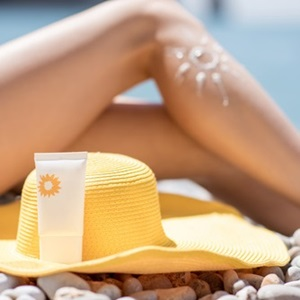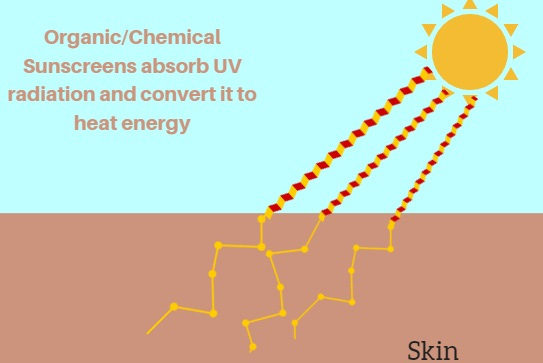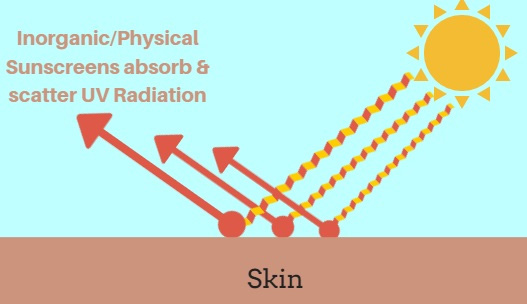Sun care, and in particular sun protection, is one of the fastest-growing segments of the personal care market. Also, UV protection is now being incorporated into many daily-use cosmetic products (for example, facial skin care products and decorative cosmetics), as consumers become more aware that the need to protect themselves from the sun does not only apply to a beach holiday.
Today's sun care formulator must achieve high SPF and challenging UVA protection standards, while also making products elegant enough to encourage consumer compliance, and cost-effective enough to be affordable in difficult economic times.

Efficacy and elegance are in fact dependent on one another; maximizing the efficacy of the actives used enables high SPF products to be created with minimal levels of UV filters. This allows the formulator greater freedom to optimize skin feel. Conversely, good product aesthetics encourage consumers to apply more products and therefore get closer to the labelled SPF.
Performance Attributes to Consider when Selecting UV Filters for Cosmetic Formulations
• Safety for intended end-user group - All UV filters have been extensively tested to ensure that they are inherently safe for topical application; however certain sensitive individuals may have allergic reactions to particular types of UV filters.
• SPF efficacy - This is dependent on wavelength of the absorbance maximum, the magnitude of the absorbance, and the breadth of the absorbance spectrum.
• Broad spectrum / UVA protection efficacy - Modern sunscreen formulations are required to meet certain UVA protection standards, but what is often not well understood is that UVA protection also makes a contribution to the SPF.
• Influence on skin feeling - Different UV filters have different effects on skin feeling; for example some liquid UV filters can feel “sticky” or “heavy” on the skin, while water-soluble filters contribute a drier skin feel.
• Appearance on skin - Inorganic filters and organic particulates can cause whitening on skin when used at high concentrations; this is usually undesirable, but in some applications (eg. baby sun care) it can be perceived as an advantage.
• Photostability - Several organic UV filters decay on exposure to UV, thus reducing their efficacy; but other filters can help to stabilize these “photo-labile” filters and reduce or prevent the decay.
• Water resistance - Inclusion of water-based UV filters alongside oil-based ones often provides a significant boost to SPF, but can make it more difficult to achieve water-resistance.
» View All Commercially Available Sun Care Ingredients & Suppliers in Cosmetics Database
UV Filter Chemistries
Sunscreen actives are generally classified as organic sunscreens or inorganic sunscreens. Organic sunscreens absorb strongly at specific wavelengths and are transparent to visible light. Inorganic sunscreens work by reflecting or scattering UV radiation.
Let's learn about them deeply:
Organic sunscreens

Organic sunscreens are also known as chemical sunscreens. These consist of organic (carbon-based) molecules which work as sunscreens by absorbing UV radiation and converting it to heat energy.
Organic Sunscreens Strengths & Weaknesses
|
Strengths |
Weaknesses |
|
Cosmetic elegance – most organic filters, being either liquids or soluble solids, leave no visible residue on the skin surface after application from a formulation |
Narrow spectrum – many only protect over a narrow wavelength range |
|
Traditional organics are well understood by formulators |
“Cocktails” required for high SPF |
|
Good efficacy at low concentrations |
Some solid types can be difficult to dissolve and maintain in solution |
|
Questions over safety, irritancy and environmental impact |
|
|
Some organic filters are photo-unstable |
Organic sunscreens Applications
Organic filters can in principle be used in all sun care / UV protection products but may not be ideal in products for babies or sensitive skin due to the possibility of allergic reactions in sensitive individuals. They are also not suitable for products making "natural" or "organic" claims as they are all synthetic chemicals.
Organic UV Filters: Chemical types
PABA (para-amino benzoic acid) derivatives
• Example: Ethylhexyl Dimethyl PABA
• UVB filters
• Rarely used nowadays due to safety concerns
Salicylates
• Examples: Ethylhexyl Salicylate, Homosalate
• UVB filters
• Low cost
• Low efficacy compared to most other filters
Cinnamates
• Examples: Ethylhexyl Methoxycinnamate, Iso-amyl Methoxycinnamate, Octocrylene
• Highly effective UVB filters
• Octocrylene is photostable and helps to photo-stabilise other UV filters, but other cinnamates tend to have poor photostability
Benzophenones
• Examples: Benzophenone-3, Benzophenone-4
• Provide both UVB and UVA absorption
• Relatively low efficacy but help to boost SPF in combination with other filters
• Benzophenone-3 is rarely used in Europe nowadays due to safety concerns
Triazine and triazole derivatives
• Examples: Ethylhexyl triazone, bis-Ethylhexyloxyphenol Methoxyphenyl Triazine
• Highly effective
• Some are UVB filters, others give broad spectrum UVA/UVB protection
• Very good photostability
• Expensive
Dibenzoyl derivatives
• Examples: Butyl Methoxydibenzoylmethane (BMDM), Diethylamino Hydroxybenzoyl Hexyl Benzoate (DHHB)
• Highly effective UVA absorbers
• BMDM has poor photostability, but DHHB is much more photostable
Benzimidazole sulfonic acid derivatives
• Examples: Phenylbenzimidazole Sulfonic Acid (PBSA), Disodium Phenyl Dibenzimidazole Tetrasulfonate (DPDT)
• Water-soluble (when neutralized with a suitable base)
• PBSA is UVB filter; DPDT is a UVA filter
• Often show synergies with oil-soluble filters when used in combination
Camphor derivatives
• Example: 4-Methylbenzylidene Camphor
• UVB filter
• Rarely used nowadays due to safety concerns
Anthranilates
• Example: Menthyl anthranilate
• UVA filters
• Relatively low efficacy
• Not approved in Europe
Polysilicone-15
• Silicone polymer with chromophores in the side chains
• UVB filter
Inorganic sunscreens
These sunscreens are also known as physical sunscreens. These consist of inorganic particles which work as sunscreens by absorbing and scattering UV radiation. Inorganic sunscreens are available either as dry powders or pre-dispersions.

Inorganic sunscreens Strengths & Weaknesses
|
Strengths |
Weaknesses |
|
Safe / non-irritant |
Perception of poor aesthetics (skinfeel and whitening on skin) |
|
Broad spectrum |
Powders can be difficult to formulate with |
|
High SPF (30+) can be achieved with a single active (TiO2) |
Inorganics have been caught up in the nano debate |
|
Dispersions are easy to incorporate |
|
|
Photostable |
Inorganic Sunscreens Applications
Inorganic sunscreens are suitable for any UV protection applications except clear formulations or aerosol sprays. They are particularly well suited for baby sun care, sensitive skin products, products making “natural” claims, and decorative cosmetics.
Inorganic UV filters Chemical Types
Titanium Dioxide
• Primarily a UVB filter, but some grades also provide good UVA protection
• Various grades available with different particle sizes, coatings etc.
• Most grades fall into the realm of nanoparticles
• Smallest particle sizes are very transparent on skin but give little UVA protection; larger sizes give more UVA protection but are more whitening on skin
Zinc Oxide
• Primarily a UVA filter; lower SPF efficacy than TiO2, but gives better protection than TiO2 in the long wavelength “UVA-I” region
• Various grades available with different particle sizes, coatings etc.
• Most grades fall into the realm of nanoparticles
Performance / Chemistry matrix
Rate from -5 to +5:
-5: significant negative effect | 0: no effect | +5: significant positive effect
(Note: for cost and whitening, “negative effect” means cost or whitening is increased.)
|
Cost |
SPF |
UVA |
Skin Feel |
Whitening |
Photo-stability |
Water |
|
|
Benzophenone-3 |
-2 |
+4 |
+2 |
0 |
0 |
+3 |
0 |
|
Benzophenone-4 |
-2 |
+2 |
+2 |
0 |
0 |
+3 |
0 |
|
Bis-ethylhexyloxyphenol Methoxyphenyl Triazine |
-4 |
+5 |
+5 |
0 |
0 |
+4 |
0 |
|
Butyl Methoxy-dibenzoylmethane |
-2 |
+2 |
+5 |
0 |
0 |
-5 |
0 |
|
Diethylamino Hydroxy Benzoyl Hexyl Benzoate |
-4 |
+1 |
+5 |
0 |
0 |
+4 |
0 |
|
Diethylhexyl Butamido Triazone |
-4 |
+4 |
0 |
0 |
0 |
+4 |
0 |
|
Disodium Phenyl Dibenzimiazole Tetrasulfonate |
-4 |
+3 |
+5 |
0 |
0 |
+3 |
-2 |
|
Ethylhexyl Dimethyl PABA |
-1 |
+4 |
0 |
0 |
0 |
+2 |
0 |
|
Ethylhexyl Methoxycinnamate |
-2 |
+4 |
+1 |
-1 |
0 |
-3 |
+1 |
|
Ethylhexyl Salicylate |
-1 |
+1 |
0 |
0 |
0 |
+2 |
0 |
|
Ethylhexyl Triazone |
-3 |
+4 |
0 |
0 |
0 |
+4 |
0 |
|
Homosalate |
-1 |
+1 |
0 |
0 |
0 |
+2 |
0 |
|
Isoamyl p-Methoxycinnamate |
-3 |
+4 |
+1 |
-1 |
0 |
-2 |
+1 |
|
Menthyl Anthranilate |
-3 |
+1 |
+2 |
0 |
0 |
-1 |
0 |
|
4-Methylbenzylidene Camphor |
-3 |
+3 |
0 |
0 |
0 |
-1 |
0 |
|
Methylene Bis-Benzotriazolyl Tetramethylbutylphenol |
-5 |
+4 |
+5 |
-1 |
-2 |
+4 |
-1 |
|
Octocrylene |
-3 |
+3 |
+1 |
-2 |
0 |
+5 |
0 |
|
Phenylbenzimidazole Sulfonic Acid |
-2 |
+4 |
0 |
0 |
0 |
+3 |
-2 |
|
Polysilicone-15 |
-4 |
+1 |
0 |
+1 |
0 |
+3 |
+2 |
|
Tris-biphenyl Triazine |
-5 |
+5 |
+3 |
-1 |
-2 |
+3 |
-1 |
|
Titanium Dioxide – transparent grade |
-3 |
+5 |
+2 |
-1 |
0 |
+4 |
0 |
|
Titanium Dioxide – broad spectrum grade |
-3 |
+5 |
+4 |
-2 |
-3 |
+4 |
0 |
|
Zinc Oxide |
-3 |
+2 |
+4 |
-2 |
-1 |
+4 |
0 |
Factors Impacting Performance of UV Filters
Performance attributes of titanium dioxide and zinc oxide vary considerably depending on the individual properties of the specific grade used, eg. coating, physical form (powder, oil-based dispersion, water-based dispersion). Users should consult with suppliers before selecting the most appropriate grade to meet their performance objectives in their formulation system.
The efficacy of oil-soluble organic UV filters is influenced by their solubility in the emollients used in the formulation. Generally, polar emollients are the best solvents for organic filters.
The performance of all UV filters is critically influenced by the rheological behavior of the formulation and its ability to form an even, coherent film on the skin. The use of suitable film-formers and rheological additives often helps to improve the efficacy of the filters.
Interesting Combination of UV filters (synergies)
There are many combinations of UV filters that show synergies. The best synergistic effects are usually achieved by combining filters that complement each other in some way, for example:-
• Combining oil-soluble (or oil-dispersed) filters with water-soluble (or water-dispersed) filters
• Combining UVA filters with UVB filters
• Combining inorganic filters with organic filters
There are also certain combinations that can yield other benefits, for example it is well known that octocrylene helps to photo-stabilize certain photo-labile filters such as butyl methoxydibenzoylmethane.
However one must always be mindful of intellectual property in this area. There are many patents covering particular combinations of UV filters and formulators are advised to always check that the combination they intend to use does not infringe any third-party patents.
Select the Right UV filter for your Cosmetic Formulation
The following steps will help you select the right UV filter(s) for your cosmetic formulation:
1. Set out clear objectives for the performance, aesthetic properties and intended claims for the formulation.
2. Check which filters are permitted for the intended market.
3. If you have a specific formulation chassis that you wish to use, consider which filters will fit with that chassis. However if possible it is best to choose the filters first and design the formulation around them. This is especially true with inorganic or particulate organic filters.
4. Use advice from suppliers and/or prediction tools such as the BASF Sunscreen Simulator to identify combinations that should achieve the intended SPF and UVA targets.
These combinations can then be tried in formulations. In-vitro SPF and UVA testing methods are useful at this stage to indicate which combinations give the best results in terms of performance - more information on the application, interpretation and limitations of these tests can be gathered with the SpecialChem e-training course: UVA/SPF: Optimizing your Test Protocols
The test results, along with the results of other tests and assessments (eg. stability, preservative efficacy, skin feel), enable the formulator to select the best option(s) and also guide the further development of the formulation(s).
Post time: Jan-03-2021